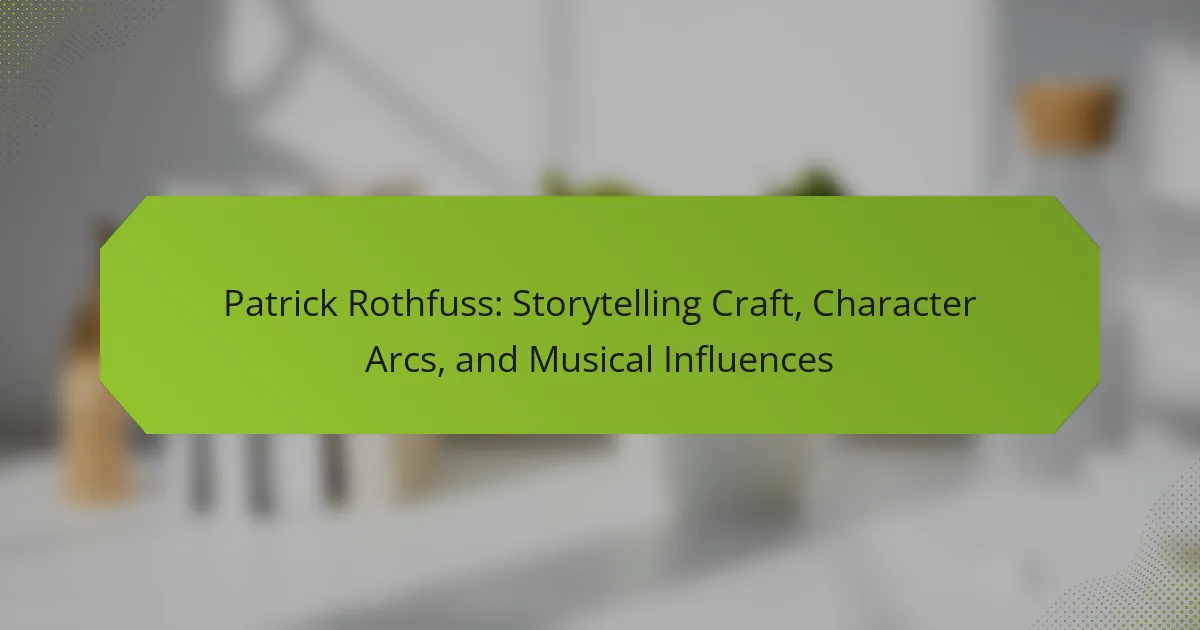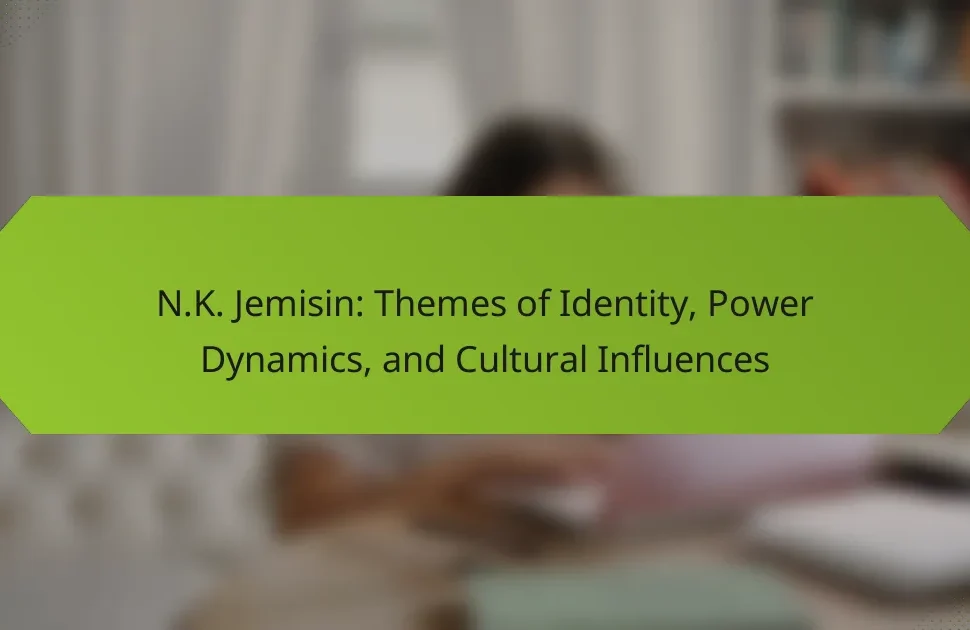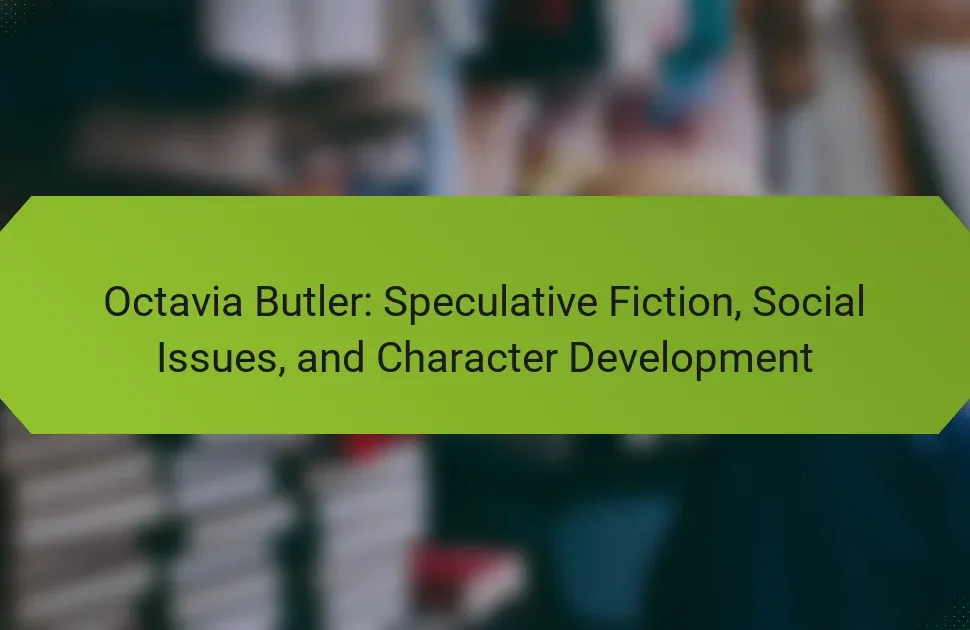Patrick Rothfuss captivates readers with his intricate storytelling craft, emphasizing deep character arcs and the influence of music. This article explores how Rothfuss intertwines emotional depth with narrative structure, highlights prominent character transformations, and examines the role of musical elements in enriching his narratives. Additionally, it discusses the broader cultural impact of his work on contemporary literature.
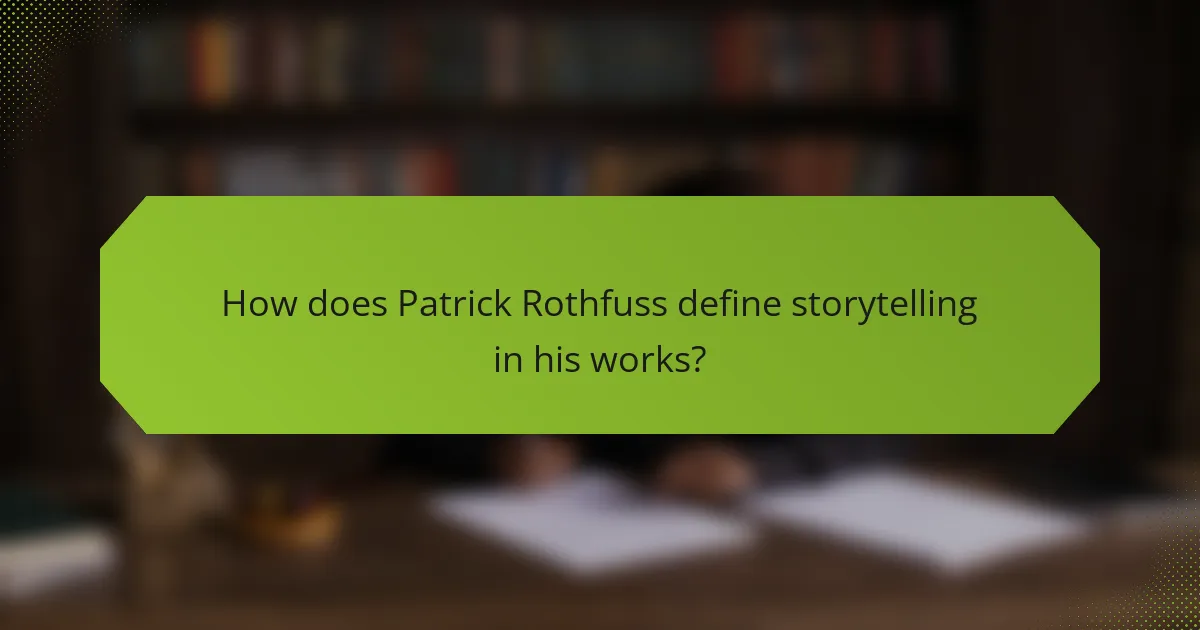
How does Patrick Rothfuss define storytelling in his works?
Patrick Rothfuss defines storytelling as a blend of intricate character arcs and rich musical influences. His works emphasize emotional depth and narrative structure. Rothfuss uses storytelling to explore themes of loss, love, and the human experience. He integrates lyrical prose that enhances the rhythm of his narratives, making them resonate with readers.
What are the key elements of Rothfuss’s narrative style?
Patrick Rothfuss’s narrative style is characterized by lyrical prose, deep character development, and intricate world-building. His storytelling craft combines rich descriptions and emotional depth, often enhanced by musical elements. Rothfuss explores themes of identity and loss through well-crafted character arcs, allowing readers to connect deeply with the protagonists. Additionally, he employs a unique narrative structure that intertwines storytelling with song, creating a rhythmic flow that captivates audiences.
Why is world-building crucial in Rothfuss’s storytelling?
World-building is crucial in Rothfuss’s storytelling as it creates immersive settings that enhance character development and plot depth. His detailed worlds allow readers to engage with the narrative on multiple levels. The intricate cultures, histories, and magic systems provide context for character motivations and growth. This rich backdrop also invites readers to explore themes of identity and belonging, making the story resonate more profoundly. Rothfuss’s world-building is a unique attribute that distinguishes his work, contributing significantly to the overall impact of his storytelling.
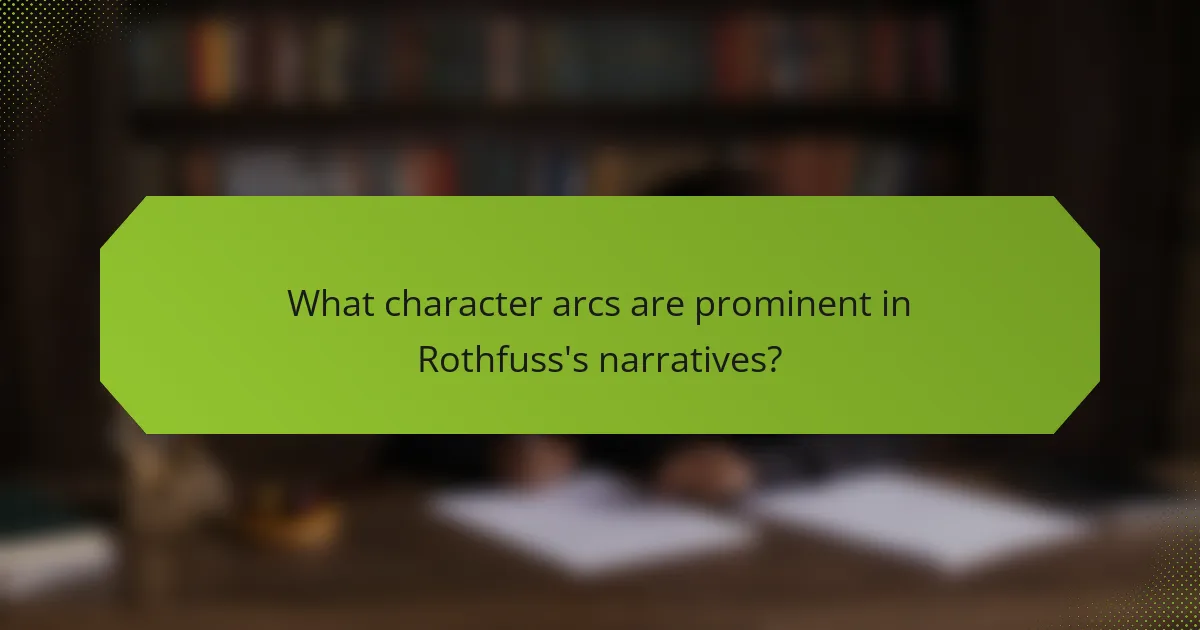
What character arcs are prominent in Rothfuss’s narratives?
Prominent character arcs in Patrick Rothfuss’s narratives include themes of growth, loss, and redemption. Characters like Kvothe undergo significant transformations, facing challenges that shape their identities. The interplay of music and storytelling enhances these arcs, revealing deeper emotional layers. Rothfuss skillfully intertwines personal journeys with broader existential questions, creating a rich tapestry of character development.
How do character motivations evolve throughout the story?
Character motivations evolve through internal growth, external conflicts, and relationships. In Patrick Rothfuss’s storytelling, characters like Kvothe experience profound changes driven by their experiences and choices. As they face challenges, their motivations shift from personal desires to broader goals, reflecting deeper themes of identity and purpose. This evolution is essential for creating compelling character arcs that resonate with readers. Rothfuss’s use of music as a narrative device further enhances these transformations, illustrating how art influences character development and emotional depth.
Which characters exemplify transformative journeys?
Characters that exemplify transformative journeys include Kvothe from “The Name of the Wind” and Auri from the same series. Kvothe’s evolution from a gifted child to a legendary figure showcases resilience and growth. Auri’s journey emphasizes the importance of self-discovery and healing. Both characters reflect Patrick Rothfuss’s storytelling craft, highlighting deep emotional arcs and the impact of musical influences on their development.
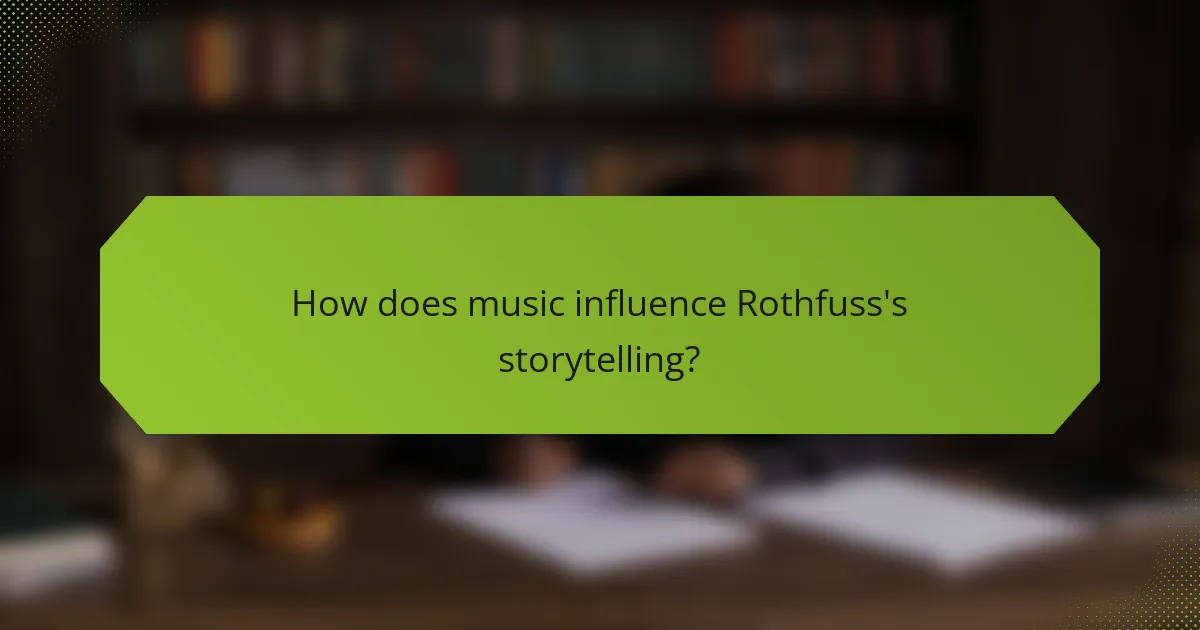
How does music influence Rothfuss’s storytelling?
Music significantly influences Patrick Rothfuss’s storytelling by enhancing emotional depth and character development. His narratives often reflect musical structures, mirroring rhythm and cadence. Rothfuss incorporates lyrical elements to evoke mood, creating a rich, immersive experience for readers. This unique attribute of blending music with prose sets his work apart, emphasizing the interplay between sound and storytelling.
What role does lyrical composition play in character development?
Lyrical composition significantly enhances character development by revealing emotions and motivations. Through song lyrics, characters express inner thoughts, creating depth and relatability. This technique allows readers to connect with characters on an emotional level, making their journeys more impactful. Rothfuss effectively uses lyrical elements to enrich character arcs, providing insight into their struggles and growth. As a result, music becomes a powerful narrative tool that shapes the reader’s understanding of character dynamics.
Which musical themes resonate within Rothfuss’s works?
Musical themes in Patrick Rothfuss’s works include the power of song, the connection between music and memory, and the role of storytelling. These elements enhance character development and emotional depth. For example, Kvothe’s journey showcases how music influences relationships and personal identity. Rothfuss uses music as a narrative device to evoke feelings and create atmosphere, reflecting the unique attribute of his storytelling craft.
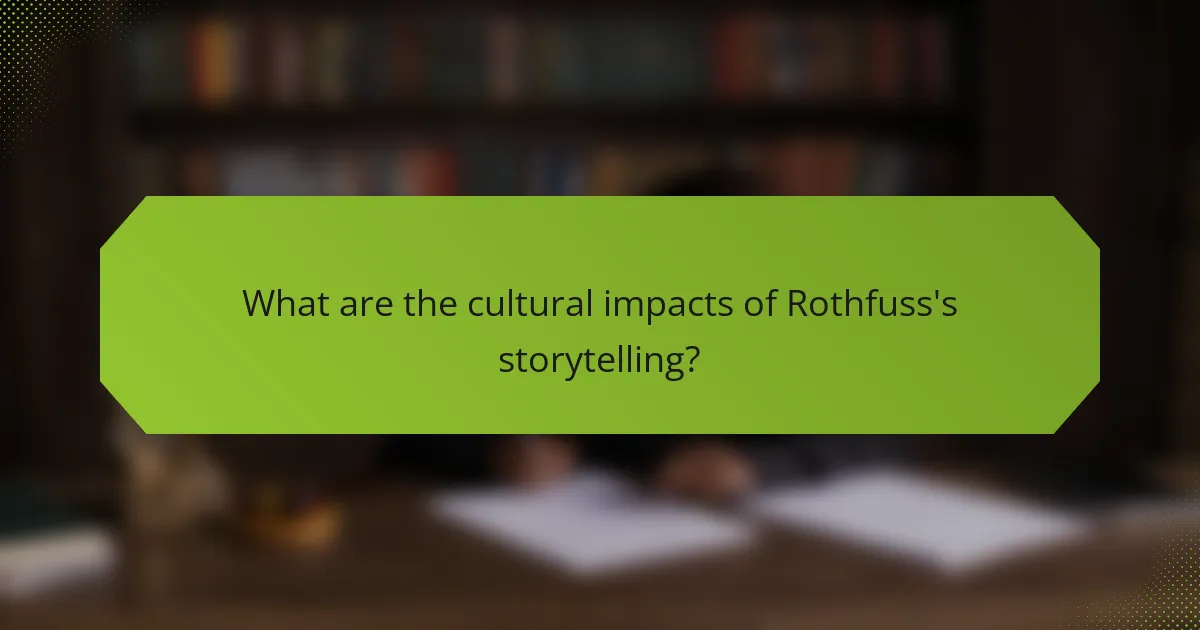
What are the cultural impacts of Rothfuss’s storytelling?
Patrick Rothfuss’s storytelling has significantly influenced contemporary culture through its rich character development and lyrical prose. His narratives promote deep emotional connections, encouraging readers to engage with complex themes. The incorporation of music within his storytelling further enhances the cultural impact, as it resonates with audiences on multiple sensory levels. Rothfuss’s work inspires discussions about morality, friendship, and the human experience, shaping literary conversations and influencing aspiring writers globally.
How does Rothfuss’s work reflect contemporary societal themes?
Patrick Rothfuss’s work reflects contemporary societal themes through its exploration of identity, power dynamics, and the human experience. His characters navigate complex moral landscapes, mirroring societal struggles with authenticity and belonging. The use of music as a narrative device emphasizes emotional connections, resonating with modern audiences seeking deeper meaning in storytelling. Rothfuss’s intricate world-building highlights issues of knowledge and ignorance, prompting reflections on the value of education and understanding in today’s society.
Which audiences connect most deeply with his narratives?
Patrick Rothfuss’s narratives resonate deeply with fantasy enthusiasts, aspiring writers, and music lovers. These audiences appreciate his intricate storytelling, character development, and lyrical prose. Fantasy readers are drawn to his world-building and magical elements. Aspiring writers connect with his narrative techniques and character arcs. Music lovers find inspiration in his incorporation of musical themes. Each group values different aspects of his work, enriching their reading experience.

What unique attributes set Rothfuss apart from other authors?
Patrick Rothfuss stands out due to his intricate storytelling craft, deep character arcs, and musical influences. His unique ability to blend lyrical prose with rich world-building creates an immersive reading experience. Rothfuss’s characters often undergo profound transformations, making their journeys relatable and impactful. Additionally, his incorporation of music as a narrative device adds a distinctive layer to his storytelling, enhancing emotional resonance. This combination of elements sets him apart from other authors in the fantasy genre.
How does Rothfuss’s academic background inform his writing style?
Patrick Rothfuss’s academic background in English and his deep understanding of storytelling enhance his writing style significantly. His studies emphasize narrative structure, character development, and the intricacies of language. Rothfuss’s ability to weave complex character arcs reflects his academic focus on literature and storytelling techniques. Additionally, his knowledge of music informs the rhythm and pacing of his prose, creating a lyrical quality that resonates with readers. This combination of academic insight and artistic expression contributes to his unique narrative voice.
What rare storytelling techniques does Rothfuss employ?
Patrick Rothfuss employs rare storytelling techniques such as nonlinear narrative structures, intricate world-building, and the integration of music as a narrative device. These techniques enhance character development and immerse readers in the story’s emotional landscape. Rothfuss’s use of unreliable narrators adds depth, inviting readers to question perspectives and motivations. Additionally, his lyrical prose often mirrors musical rhythms, creating a unique reading experience that resonates with themes of storytelling itself.
How does Rothfuss engage with fan communities?
Patrick Rothfuss actively engages with fan communities through social media, conventions, and interactive storytelling. He frequently interacts with fans on platforms like Twitter and Reddit, sharing insights into his writing process. Rothfuss also hosts events, such as readings and Q&A sessions, fostering a sense of community. His unique storytelling approach often invites fan interpretations and discussions, enhancing their connection to his work.
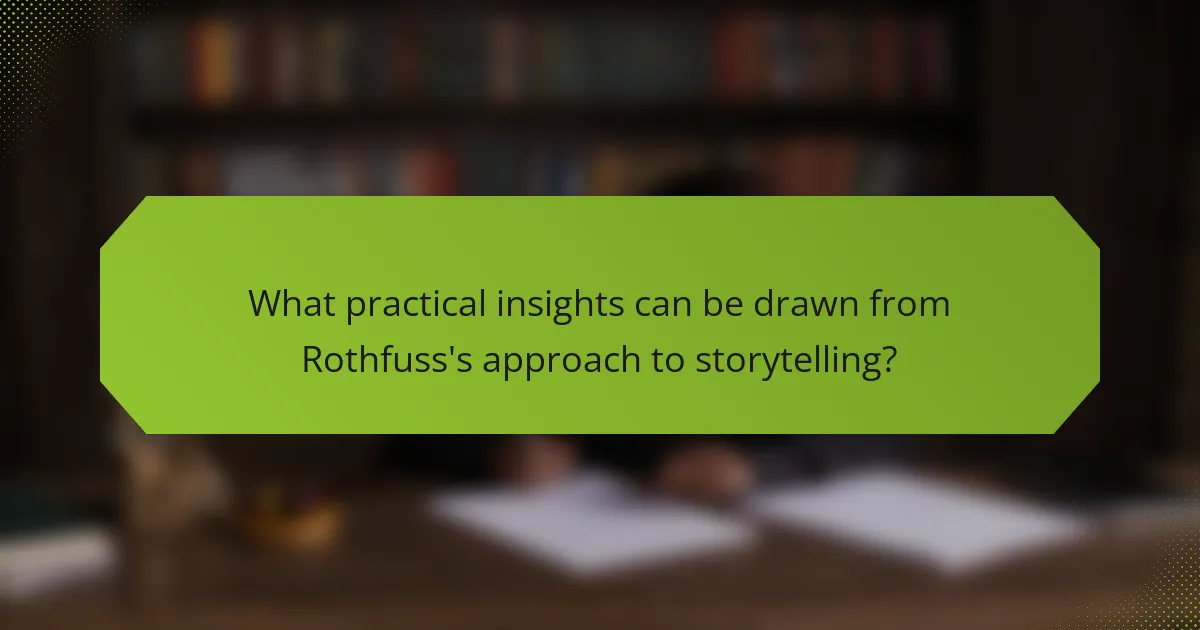
What practical insights can be drawn from Rothfuss’s approach to storytelling?
Rothfuss’s storytelling approach emphasizes deep character development and intricate world-building, creating immersive narratives. His unique integration of music enhances emotional resonance, enriching character arcs. This method encourages readers to engage more profoundly, fostering a memorable connection with the story.
What are the best practices for aspiring storytellers inspired by Rothfuss?
Aspiring storytellers inspired by Rothfuss should focus on developing rich character arcs, intricate world-building, and integrating music into their narratives. Emphasize emotional depth in characters to create relatable journeys. Use detailed settings to enhance the storytelling experience. Incorporate musical elements to evoke emotions and enrich scenes. Study Rothfuss’s techniques in weaving these elements to captivate readers.
Which common pitfalls should writers avoid based on Rothfuss’s experiences?
Writers should avoid common pitfalls like overcomplicating plots, neglecting character development, and ignoring reader engagement. Rothfuss emphasizes clarity in storytelling and the importance of crafting relatable characters. He warns against excessive exposition, which can alienate readers, and advocates for a balance between world-building and narrative flow. Lastly, he suggests maintaining authenticity in voice, as this fosters a deeper connection with the audience.
